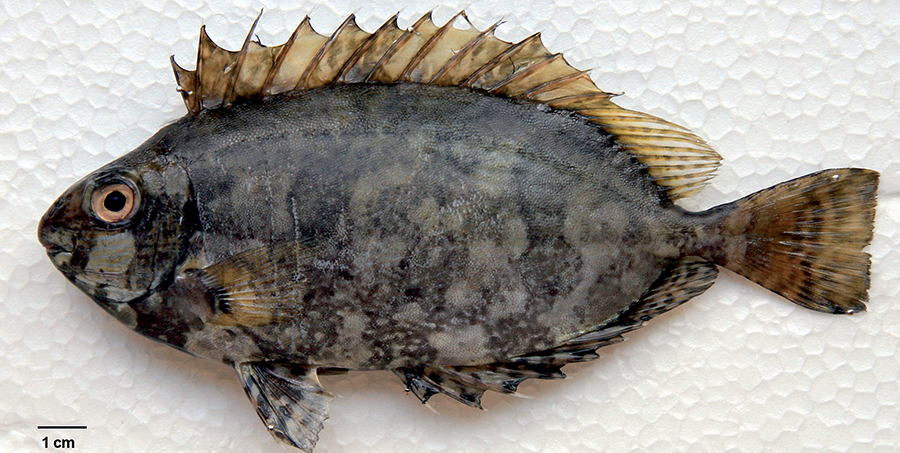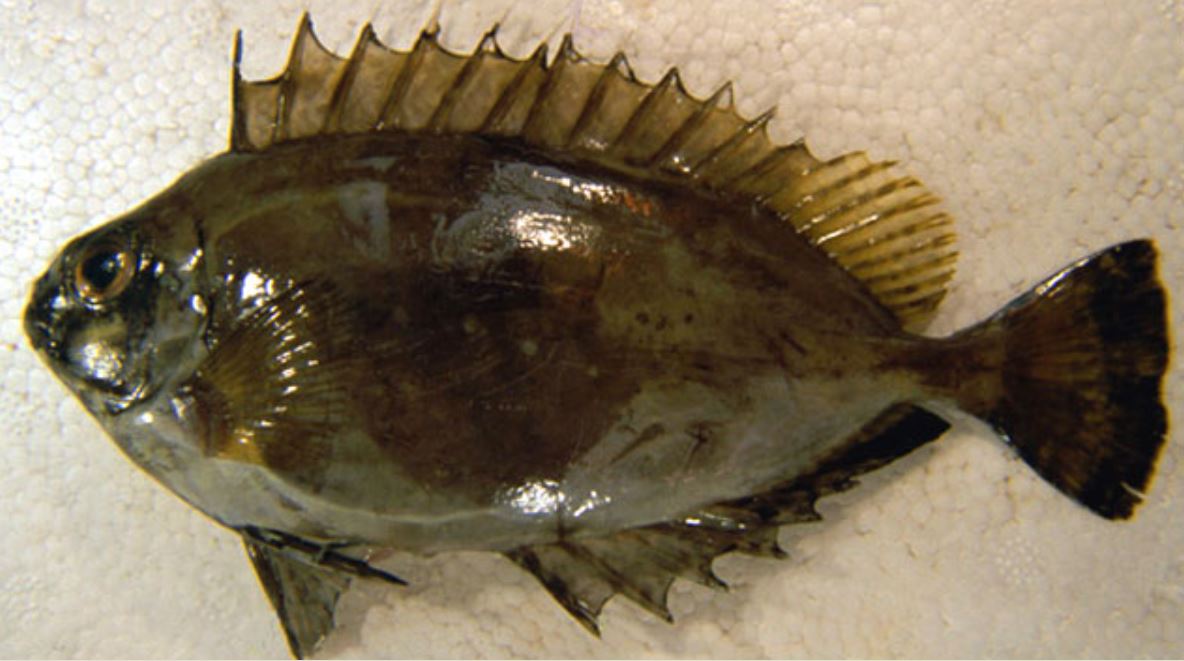
© Dulčić J., Dragičević B., Grgičević R., Lipej L.
Siganus luridus (Rüppell, 1829)
Body compressed body. There is a single row of incisor-like teeth in the jaws, each with 1 or 2 lateral cusps. Tail truncate. Attains a maximum total length of 30 cm, although common lenght is 20 cm. Colour variable, more often olive green to dark brown with a mottled pattern. There are dark bars on the tail.
Kavallakis, G. (1968). Siganus luridus and Siganus rivulatus in the Dodecaneses Islands. Haliia 248: 307-308.
1964
UNA
Dusky spinefoot
Found in schools in very shallow water close to the bottom. Prefer hard bottoms of compacted sand with rock or coral debris. Feed on a wide range of benthic algae. May suddenly stop and erect its fins (dorsal, anal and pelvic) presenting an encircling array of spines to potential predators. These spines are venomous.
It is a herbivorous species. Scientific evidence show that the intence grazing, especially in rocky areas, results in the creation of barrents. Apart from the effects on the algae, this has a wide range of other ecological effects (e.g. loss of habitats for animals, extripation of the native saleme Sarpa salpa, etc).
The venomous spine might cause a painful sting. No reports on severe cases. In addition, fishers complain on its effect on their fishing operations. It destroys nets (difficult and time-consuming to disentangle), reduces the commercial catch (if large schools of Siganus are being caught, then the amount of the remaining catch is significantly reduced), it has a low price and consumers do not appreciate it.
Yes
Yes (painful sting)
Records of Siganus luridus
Sites where Siganus luridus has been recorded in the Hellenic Sea.


